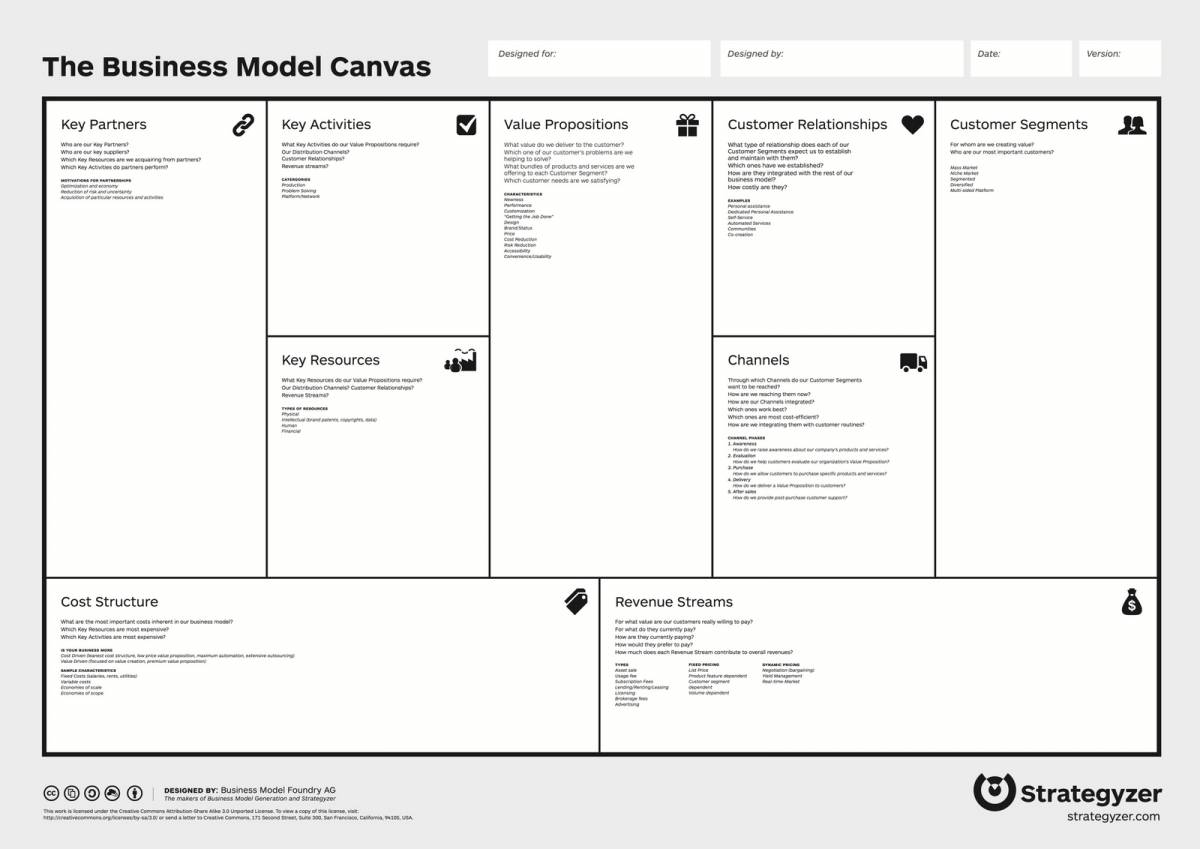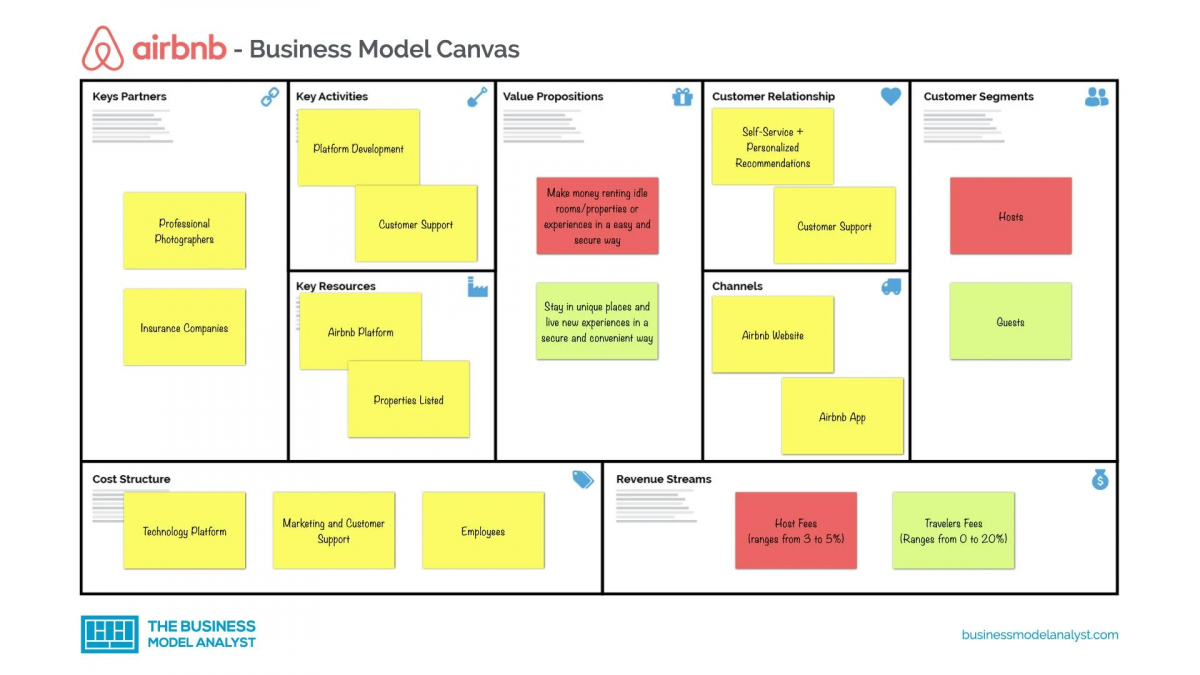Starting a business is both scary and exciting. There are many reasons to start one, and even more not to start one. But even with the odds stacked against you, you go for it because you realize there will never be a perfect time.
If you're anything like me, you go straight to a domain registrar and start looking at what domains are available for your exciting new startup. If you're even more like me, you feel the need to buy multiple domains, because if it takes off, it'd be good to have all of them... maybe you also get a few domains that are similar, in case someone misspells your domain... you should probably also—okay wait, I need to stop myself here. Otherwise, I keep finding reasons to set up an email and grab social handles instead of actually figuring out if the business is viable or not.
That's where the Business Model Canvas (BMC) comes in.
What's a Business Model Canvas?
The Business Model Canvas allows you to answer the most important questions about your business and create a bird's-eye view of every aspect of your startup. It's a strategic management tool that helps you design, communicate, and test your business idea.
The BMC is one of my favorite tools to use when my mind starts running with endless possibilities of a new startup. I'm a fan of it not just because it's widely applicable, but because it's lean.

Let’s face it—business plans are bulky. It’s tough to crank out a traditional 40-page business plan, and even tougher to make modifications to it once you get going. Because there will be modifications you'll need to make along the way, as you won’t be doing the same things you started doing when you first wrote your business plan. Your strategies and tactics will change, and unless you have unlimited time and resources to keep your snoozefest of a business plan constantly updated, you'll always feel behind.
The world moves too fast to be this meticulous when you're just starting out, and doing so will only slow you down.
My general rule of thumb for a startup is this: Develop a vision, but be flexible on the details of how you get there.
The 9 elements of a Business Model Canvas
The Business Model Canvas has 9 components:
- Value proposition
- Customer segments
- Channels
- Customer relationships
- Revenue streams
- Key resources
- Key activities
- Key partners/partnerships
- Cost structure
1. Value proposition
The value proposition is the unique value that your business offers. Your value prop defines the benefits and features that customers can expect from the product or services your business provides, and how it meets their wants and needs.
2. Customer segments
The customer segments portion refers to the specific group of people or organizations that you business identifies as its customers. It's important to identify and understand the needs, characteristics, and behaviors of these customer segments in order to create effective marketing strategies.
3. Channels
Channels are the ways in which your business communicates with and reaches its customers. Distribution is imperative in reaching your customers, so don't overlook this one. Your distribution channels could be your website, social media, blog, even offline channels such as retail stores or direct mail.
4. Customer relationships
Customer relationships outline the way in which your business interacts with its customers. It could include personal interactions, such as face-to-face sales or customer service, or automated interactions through online platforms or self-service kiosks.
Your customer relationships will depend on the nature of your business. For example: A B2B sales-driven business might require more customer relationship management than a product-led B2B Software-as-a-Service (SaaS) business.
5. Revenue streams
Revenue streams is a place to determine how your business makes money. Like most of the other components of the Business Model canvas, this section is plural for a reason—don't limit yourself to just one revenue stream. Depending on the nature of your business, this could be one-time sales, subscriptions, or licensing.
6. Key resources
Key resources are the physical, financial, and human resources that a business needs to create and deliver its products or services.
7. Key activities
Key activities are the specific actions that you need to take in order to deliver your value proposition. These could include marketing, production, distribution, and customer support.
8. Key partners/partnerships
Key Partners are the relationships that your business needs to establish in order to deliver its value proposition. Your key business partners could be individual people or other companies such as suppliers, contractors, and distributors.
9. Cost structure
Cost structure refers to the expenses that your business incurs in order to deliver its value proposition. Be sure to include both fixed costs (such as salaries and rent) as well as variable costs (such as raw materials and shipping).
Final thoughts
Regardless of what stage you're in, the Business Model Canvas helps your define and communicate your business model, identify potential challenges and opportunities, and test and iterate on your strategy. Each of these components plays a pivotal role in helping you better understand your customers (or potential customers) and create a more effective and sustainable business model.
If you don't have a business idea, pick an existing business you are familiar with and fill it out for that one. You'd be surprised how much that helps.
Here's how it might look for Airbnb:

If you do have a business idea, then you should absolutely be filling out a BMC.
Even if it's preliminary, or incomplete, or you get stuck, it provides a great starting point to think about your idea as well as jogs your mind about how you can make it work.
- Web: hiram.io
- Rising Tide (blog): hiram.io/blog
- LinkedIn: @hiramfromthechi
- Twitter/X: @hiramfromthechi
- Medium: @hiramfromthechi
- Mastodon: @hiramfromthechi@mastodon.social

